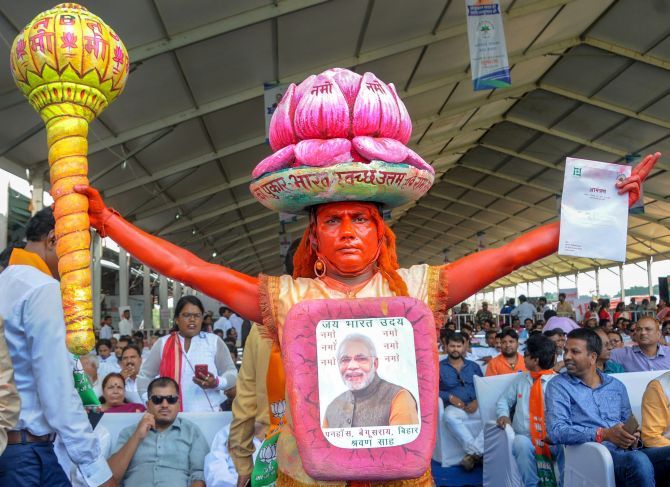Hospitals empanelled for Modicare may give preference to poor patients over the middle class for fear of strict government action, says Harsh Roongta.

Prime Minister Narendra Modi recently announced the much-awaited Pradhan Mantri Jan Aushadhi Yojana, or PMJAY health insurance policy under the umbrella of Ayushman Bharat for the poor and marginalised sections.
It is slated to cover the hospitalisation costs of around 50 lakh citizens up to Rs 500,000 per family per annum.
If this policy is even partially successful, for the first time the poor and marginalised sections will perhaps be better off than the middle-class population as far as healthcare is concerned.
Modicare provides for cashless hospitalisation facility.
Assuming many hospitals empanel for the scheme, any shortcomings will be cleared soon.
Hospitals are unlikely to release the patients till the billing is approved, and any delays in releasing approved payments will result in stoppage of treatment.
The resulting headlines are not what any government would like to see in an election year.
The ‘marginalised’ middle class for once will be much worse off as far as health insurance goes.
They have very little faith in the existing private insurers, which is aptly pointed out in a paper put out by the National Institute of Public Finance and Policy (see https://bit.ly/bsinsurances).
In terms of claims payable, the private health insurance industry for individual policies is undeniably profitable at around 77 per cent of the premiums collected.
Elsewhere in the world, regulations prevent the industry from having such low claim ratios with automatic kick in of rebates for the insured persons, in case claims are below a certain specified percentage.
The industry’s profitability is also seen from the excellent valuation enjoyed by a few of the insurers that have seen changes in shareholding recently.
Even the commission percentage is high at around 12 per cent, and has an upward trajectory.
Despite the low level of coverage, the number of complaints per million persons covered is at a high of 500, which is higher than anywhere else in the world.
And this is despite India not being a litigation-prone society.
This is where Modicare will make it worse for the middle-class.
Hospitals empanelled for the scheme will have a rush of new customers for whom insurers dare not deny claims for the fear of the government.
The new customers may crowd out the middle-class patients from hospitals.
The study also points to possible remedies.
The existing regulations need to be enforced, the deficiencies in regulations need to be corrected, and the grievance redressal machinery needs to be made independent of the industry.
Prodded by several court decisions and such policy papers, the insurance regulator has also set up a panel to examine the standard exclusions in a policy and whether it makes sense to eliminate them substantially.
The PM’s policy does hold out a ray of hope.
In his August 15 speech, he mentioned that eventually Modicare will be available to all Indians (perhaps by paying the negotiating premium).
Lets all look forward to that.
Photograph: PTI Photo












 © 2025
© 2025